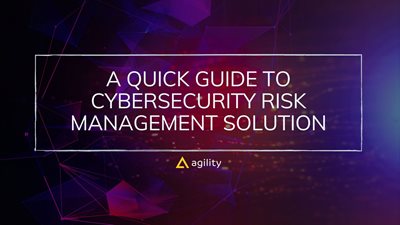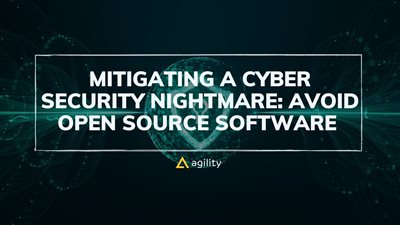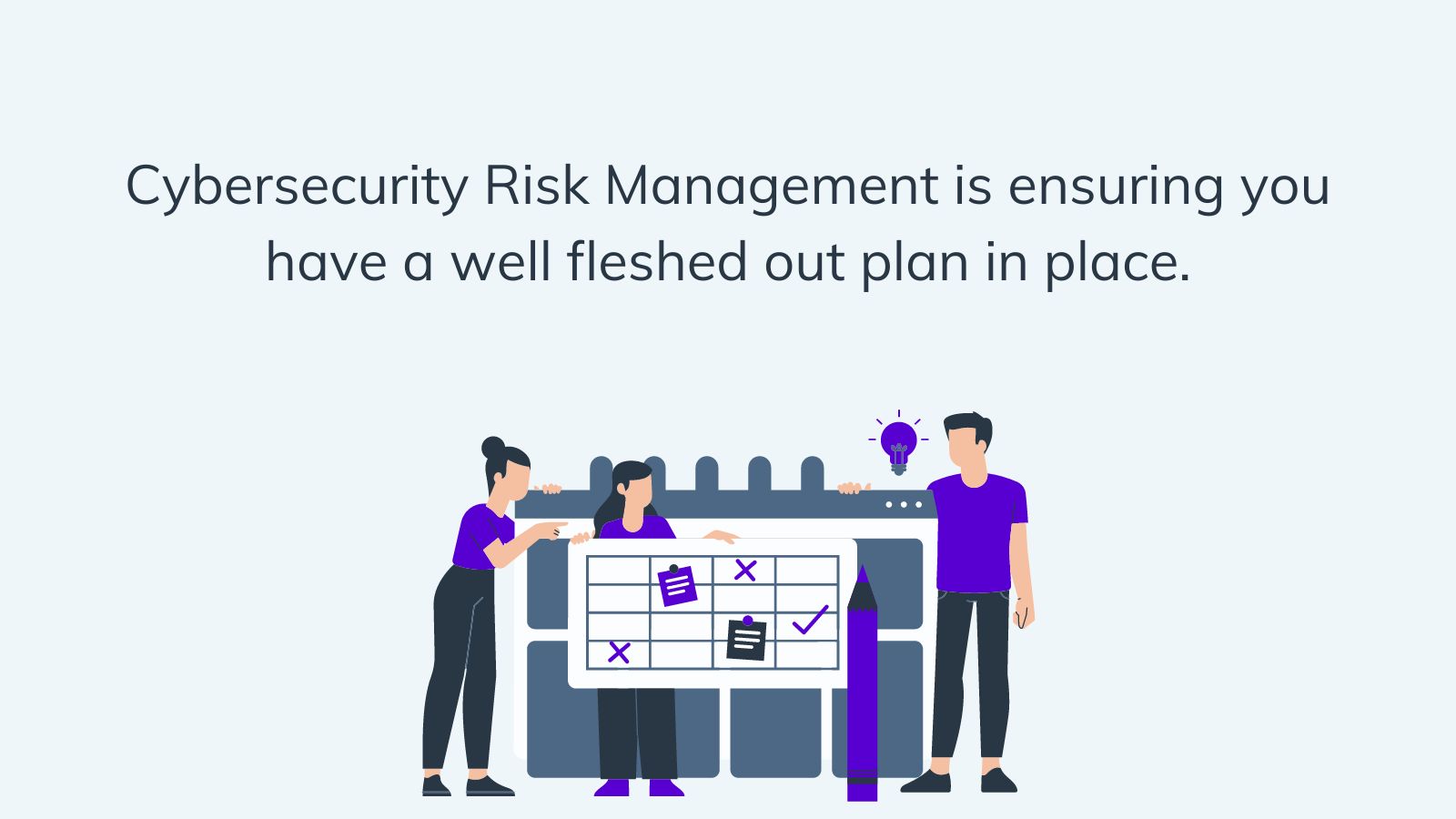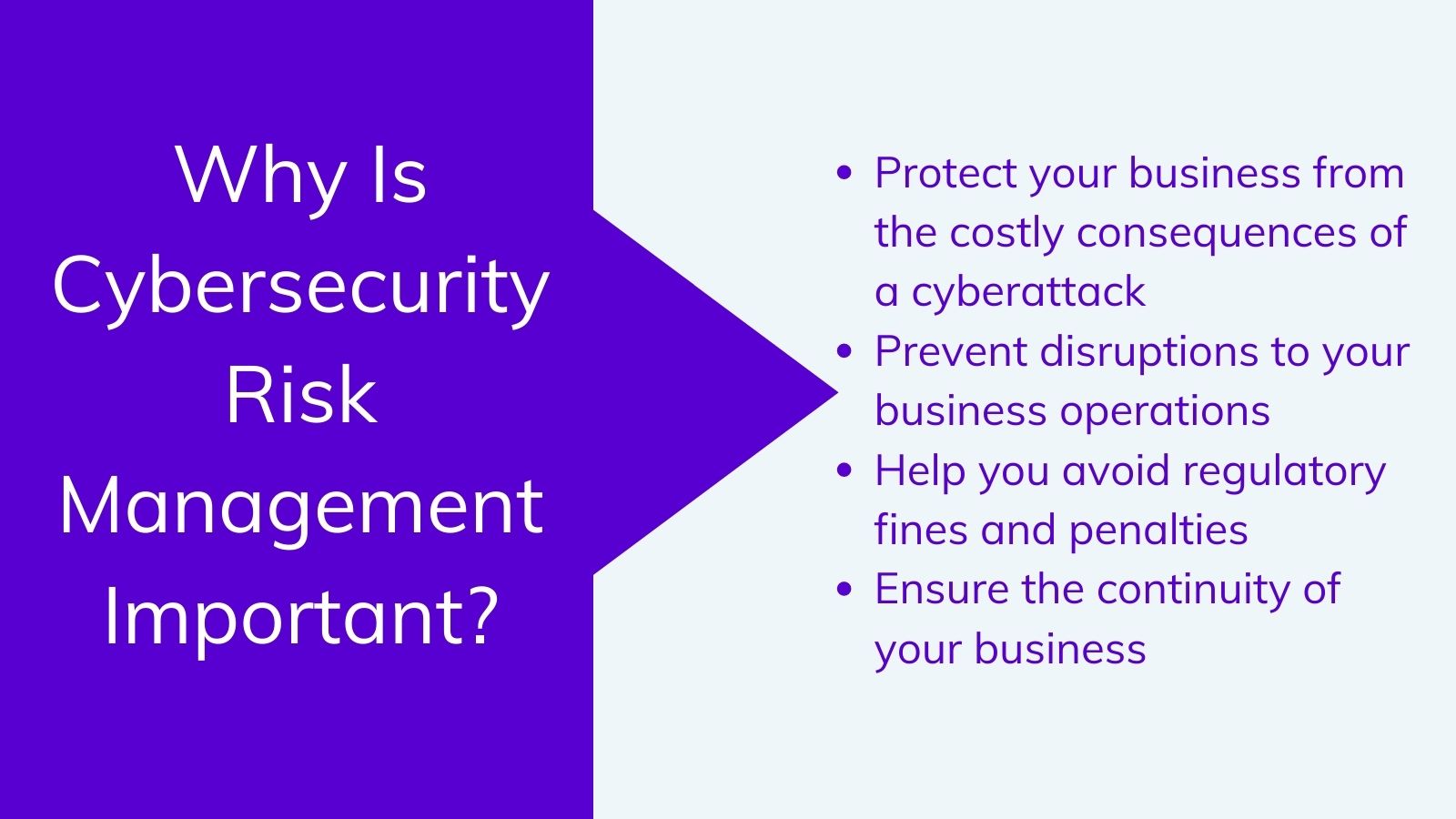A Quick Guide to Cybersecurity Risk Management Solution
Cybersecurity risk management is identifying, assessing, and mitigating risks to your business operations and data.


Cybersecurity risk management is one of the most important aspects of protecting your business in today's digital age, regardless of the size and the industry you belong to– whether you're an e-commerce business or even a blockchain game company.
Businesses face new threats from cybercriminals looking to steal sensitive data or disrupt operations every day. When all those data are stolen, or when the business operations are disrupted, it will not only cost the company much money but can also damage its reputation.
In other words, if you don't have a plan to manage cybersecurity risks, you're putting your business at serious risk. That is why cybersecurity risk management is so important. Companies can protect themselves from these threats by implementing effective cybersecurity risk management practices.
This guide will discuss cybersecurity risk management, why it is essential, and how you can implement best practices to protect your business. We will also explore some of the most common cybersecurity risk management solutions.
What Is Cybersecurity Risk Management?
Cybersecurity risk management is identifying, assessing, and mitigating risks to your business operations and data. It involves creating a plan for dealing with potential cybersecurity threats and vulnerabilities.
This plan should be designed to reduce the likelihood of an attack and minimize the impact if one does occur. Today's businesses face various risks, including malware, phishing attacks, data breaches, and more.
It's important to note that cybersecurity risk management is not just about preventing attacks from happening in the first place. It's also about having a plan for what to do if an attack does occur. This plan should include steps to contain the damage, mitigate the risk of future attacks, and restore any lost data or disrupt operations.
Why Is Cybersecurity Risk Management Important?
There are several reasons why cybersecurity risk management is so vital for businesses. First of all, the cost of cybercrime is constantly on the rise.
According to the Cost of a Data Breach Report 2021, the global average cost of a data breach increased by a worrying 10% in 2021, reaching $4.24 million, up from $3.86 million in 2020.
But, what makes cybersecurity risk management crucial for businesses?
Protect your business from the costly consequences of a cyberattack
Now we understand that the cost of a data breach is constantly increasing. This means that the consequences could be devastating if your business were to suffer a cyberattack.
Not only would you have to deal with the direct costs of the attack, such as the cost of restoring lost data or repairing damage to your systems, but you would also have to deal with the indirect costs, such as the loss of revenue and customers.
In other words, cybersecurity risk management is important because it can help protect your business from the costly consequences of a cyberattack.
Prevent disruptions to your business operations
Another reason why cybersecurity risk management is so essential is that cyberattacks can cause disruptions to your business operations.
For example, if your website is hacked, it could be taken offline for days or weeks. This would significantly impact your business, as customers would not be able to purchase your products or services online.
Help you avoid regulatory fines and penalties
If you are subject to data privacy laws (such as GDPR), you could be facing hefty fines and penalties if you suffer a data breach.
For example, under GDPR, businesses can be fined up to €20 million (about $24 million) or up to four percent of their annual global turnover, whichever is greater. A high-performing cybersecurity risk management will help you avoid these fines and penalties.
Ensure the continuity of your business
Finally, it's important to note that cybersecurity risk management is not just about protecting your business from the financial consequences of a cyberattack. It's also about preserving the continuity of your business.
In other words, implementing effective cybersecurity risk management practices can improve your company's overall security posture and make it more resistant to future attacks. All of these translate to an enhanced your company's reputation by demonstrating that you are taking steps to protect your customers' data.
Best Practices in Cybersecurity Risk Management Plan
When it comes to cybersecurity risk management, there is no one-size-fits-all solution. The best approach will vary depending on the specific needs of your business.
However, some essential elements should be included in any effective cybersecurity risk management plan:

Identifying and assessing risks
The first step in any risk management plan is to identify and assess your business's risks. Take notes of what you're going to do on Google project management. This can be done through various methods, such as conducting a threat assessment or performing a penetration test.
Implementing security controls
Once you have identified and assessed the risks, you need to implement security controls to mitigate them. This might include implementing firewalls, intrusion detection systems, or encryption.
Creating incident response plans
If a cyberattack does occur, it is important to have a plan in place for how to respond. This should include steps for containing and mitigating the damage, as well as for communicating with stakeholders.
Responding to incidents
You need to have a plan for how you will respond if an incident occurs. This should include steps for containment, eradication, and recovery.
Testing and monitoring
Finally, it is crucial to regularly test and monitors your security controls to ensure they are effective. This might involve conducting regular vulnerability scans or penetration tests.
Popular Cybersecurity Risk Management Frameworks
A cybersecurity framework guides how to implement an effective cybersecurity risk management plan.
When choosing a cybersecurity framework, it is vital to select one that is appropriate for the specific needs of your business. It means that you should consider the size and scope of your organization and the types of risks you face. Once you have selected a framework, you can use it to guide the development of your cybersecurity risk management plan.
Several different frameworks can be used for cybersecurity risk management. The most popular include:
ISO 27001
This international standard guides how to implement an effective information security management system (ISMS).
NIST Cybersecurity Framework
This framework was developed by the US National Institute of Standards and Technology (NIST) and provides a holistic approach to managing cybersecurity risks.
CIS 20 Critical Controls
This is a list of 20 security controls considered essential for protecting against the most common attacks.
SANS Top 20
This is another list of 20 security controls developed by the SANS Institute. This framework is more comprehensive than the CIS 20, as it includes additional guidance on implementation. SANS Top 20 also covers a broader range of topics, such as supply chain security and incident response.
COBIT
COBIT is a framework from the Institute of Internal Auditors that focuses on the governance and management of enterprise IT. It includes guidance on risk management, as well as on the implementation of security controls.
Cybersecurity Risk Management Tools
Each day, the number and sophistication of cyber threats are constantly increasing. Preventing all those cyber threats and attacks might sound daunting. But, thanks to the internet, as the threats are growing, so are the tools and solutions available to help businesses manage their cybersecurity risk.
Several different tools can be used to help with cybersecurity risk management. These include:
Vulnerability scanners
These tools can scan for weaknesses in your systems and applications. Popular vulnerability scanners include:
- Nessus
- Qualys
- Nexpose by Rapid7
Penetration testing tools
These tools can be used to simulate attacks and test the effectiveness of your security controls. Popular penetration testing tools include:
- Metasploit Project
- Burp Suite
- Nmap
Incident response platforms
These platforms can help you manage and respond to incidents more effectively. Popular incident response platforms include:
- IBM Resilient
- RSA NetWitness
- FireEye Helix
Security information and event management (SIEM) solutions
These solutions can help you collect and analyze data from various sources to identify potential security threats. Popular SIEM solutions include:
- Splunk
- IBM QRadar
- LogRhythm
Cybersecurity Risk Management Strategy
Along with those tools mentioned before, several different services can be used to help with cybersecurity risk management.
These services are provided by specialist companies and can be used to supplement your in-house capabilities. Services that can be used to help with cybersecurity risk management include:
Cyber Threat intelligence
This service provides information on the latest threats, helping you stay one step ahead of the attackers. For example, threat intelligence services from companies such as:
- Anomali
- Recorded Future
- ThreatConnect
Cybersecurity training
This service helps ensure that your staff are aware of the latest cybersecurity threats and know how to identify and respond to them. Some popular companies that provide cybersecurity training are:
- SANS Institute
- FireEye
- KnowBe49
Penetration testing
This service can test the effectiveness of your security controls and identify any weaknesses that attackers could exploit. You can use the services of companies such as:
- NCC Group
- Veracode
- Rapid7
Managed security services
These services can help you outsource some or all of your cybersecurity functions to a specialist company. This can free up resources within your organization to focus on other tasks. Some popular managed security service providers include:
- Symantec
- Alert Logic
- Trustwave.
Security consulting
These services can provide you with advice and guidance on how to manage your cybersecurity risks effectively. Famous security consultants include:
- KPMG
- Deloitte
- PwC.
Cyber insurance
This can help protect your business against the financial impact of a cyber incident. Popular cyber insurance providers include:
- Chubb
- AIG
- Beazley.
Cybersecurity Risk Management Solutions
Besides cybersecurity tools and services, you might also want to consider investing in a cybersecurity risk management solution. These solutions can provide an automated and comprehensive approach to managing your cybersecurity risks.
There are several different solutions available for managing cybersecurity risks. These include:
- Firewalls: Firewalls can help to protect your network from external threats by blocking unauthorized access.
- Intrusion detection systems: Intrusion detection systems can help identify and respond to potential attacks.
- Encryption: Encryption can help to protect your data from being accessed by unauthorized individuals.
- Identity and access management: Identity and access management solutions can help control who has access to your data and systems.
- Training and awareness: Training and awareness programs can help educate employees about cybersecurity risks and how to avoid them.
- Enterprise-grade security with headless CMS. Agility CMS is a comprehensive content management system that uses the leading platform Auth0 to ensure our entire authentication layer is standards-based and compliant with the latest certifications. It also provides RBAC, SSO, multifactor authentication, up-to-date data security, and SOC 2 compliance.
Wrapping Up
As businesses become increasingly reliant on technology, the risks associated with cyberattacks are also increasing. By following the above best practices and implementing the right solutions, you can effectively manage your business's cybersecurity risks. However, it is essential to remember that no security measure is perfect.
Therefore, it is also essential to have a plan in place to deal with the consequences of a breach. This might include having insurance in place to cover recovery costs or providing customers with credit monitoring services.

About the Author
Andre Oentoro is the founder of Breadnbeyond, an award-winning explainer video company. He helps businesses increase conversion rates, close more sales, and get positive ROI from explainer videos (in that order).
Twitter: @breadnbeyond
Email: andre@breadnbeyond.com
LinkedIn: Andre Oentoro
View Related Resources

Agility CMS Achieves SOC 2 Type II Compliance

Mitigating a cybersecurity nightmare: avoid open source software

Agility CMS Releases New Apps SDK to Help Customers Create Composable DXP
A secure environment is always mandatory. You shouldn't have to compromise.
Agility CMS uses the leading platform Auth0 to ensure our entire authentication layer is standards-based and compliant with the latest certifications.
Learn More



